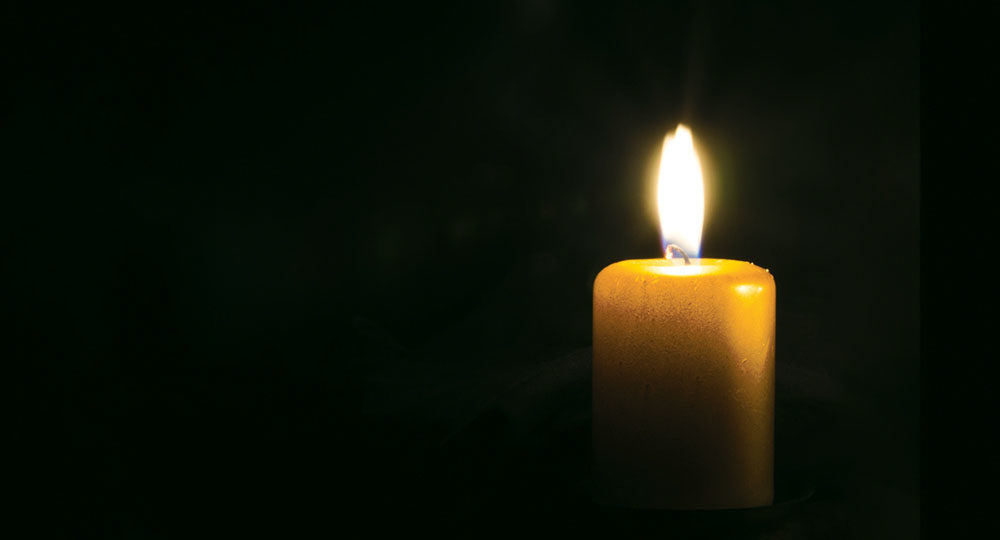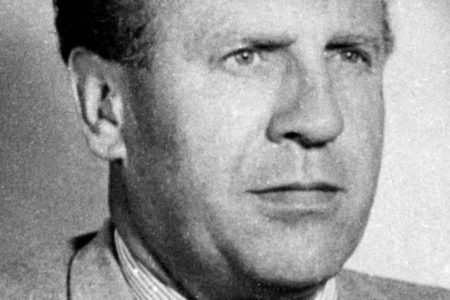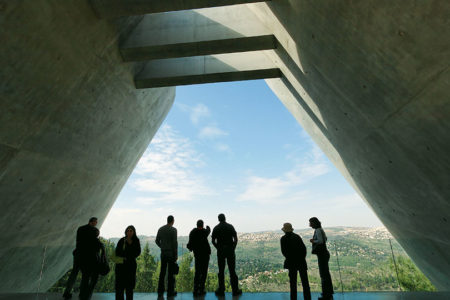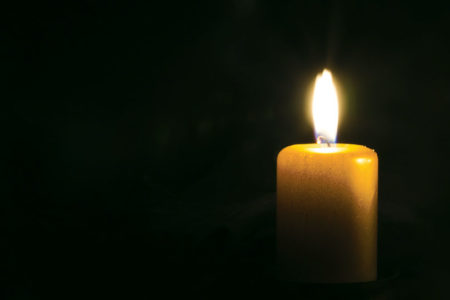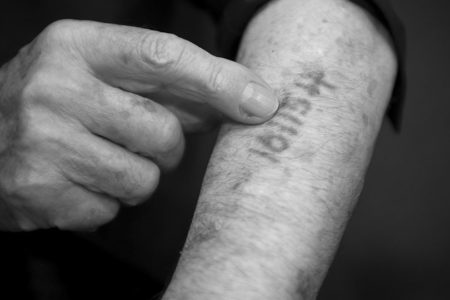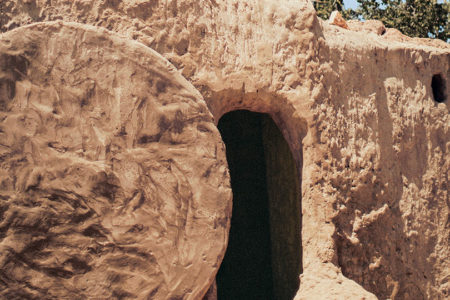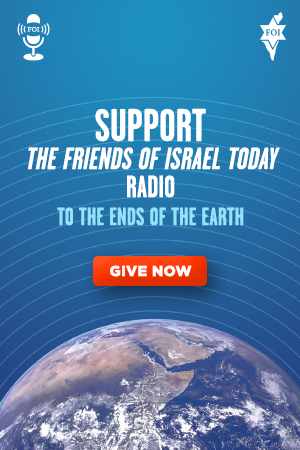Sirens of Silence
Reflections on Yom Hashoah, Holocaust Remembrance Day in Israel
People stood shoulder-to-shoulder under the Jerusalem morning sun—still, respectful, and mindful of the solemn communication for which they had assembled. The only sound was that of a siren wailing in the distance.
Siren and silence. Both simultaneously pierced the air throughout the small country as the monotone blast sounded for one minute, then stretched into two. Almost all traffic came to a stop as passengers and drivers left their vehicles to stand quietly on highways and alleyways. Television and radio broadcasts hushed, while shoppers, businessmen, and workers stood still in the heat until the moaning siren ceased.
Then, in a soulful procession, a steady stream of dignitaries, families, and national representatives emerged from the crowd and reverently laid their memorial wreaths at the base of Yad Vashem’s Warsaw Ghetto Uprising monument. It was Yom Hashoah in Israel.
Yom Hashoah, or Holocaust Martyrs’ and Heroes’ Remembrance Day, is a national event when all of Israel solemnly remembers the victims of the Holocaust of World War II. The Israeli Knesset instituted the day on August 19, 1953. The Hebrew word yom means “day.” Shoah literally translates as “devastation” or “catastrophe” but has become the modern Hebrew word for “Holocaust.”
A Hebrew day begins at sundown and ends at the following sundown. According to the Hebrew calendar, Yom Hashoah falls on the 27th of Nisan, between the end of Pesach (Passover) and the start of Yom Ha’atzmaut, Israel’s Independence Day. If 27 Nisan interferes with Shabbat, Yom Hashoah commemorations are held either the Thursday before or the Monday following the 27th.
This year Yom Hashoah will begin at sundown on Wednesday, May 4.
During the 24-hour observance, Holocaust memorial ceremonies and educational programs for all ages are held across the country. Entertainment businesses, restaurants, and gathering places close; and media outlets replace normal schedules with Holocaust-related broadcasts.
In Israel, Yom Hashoah is an official, nationwide day of remembrance. The evening and morning services at Yad Vashem are recognized as formal government ceremonies. Jewish people around the globe also observe the day with synagogue services, name-reading ceremonies, and the lighting of yahrzeit (memorial) candles.
But Yom Hashoah should not be confused with the annual International Holocaust Remembrance Day observed on January 27, which was instituted by the United Nations on November 1, 2005.
Properly memorializing the slaughter of more than 6 million Jewish people—of whom 1.5 million were children and infants— is not a simple undertaking. In the words of former Israeli President Shimon Peres, Yom Hashoah is a day when “tearing eyes turn to those who are not here with us…The piles of tortured bodies, the wounded thrown into the ditches of death, the furnaces burning the living. These are our witnesses forever. The last breath of the infants in their mothers’ arms will continue to horrify all human beings, until the end of time.”
However, memorializing the victims is not solely about the number 6 million; it is about each individual life. “Unto Every Person There is a Name” is a memorial project that Yad Vashem describes as “designed to perpetuate the memory of the Six Million…not only as a collective, but as individuals —one at a time—through the public recitation of their names on Yom Hashoah…to restore their identity and dignity.”1
The Holocaust was uniquely Jewish. Although the Nazis and their collaborators also persecuted and killed others, the Jewish people alone were targeted for extermination. The scheme was unprecedented and was designed to kill everyone of Jewish blood everywhere.
In 2014, while studying at Yad Vashem, Israel’s Holocaust History Museum and International School of Holocaust Studies, I was blessed to be invited to the national Yom Hashoah commemorations in Jerusalem. That experience has impacted me deeply to this day.
Each year, as the sun slowly sets over the Mediterranean Sea and Yom Hashoah begins, thousands of people rapidly fill Yad Vashem’s Warsaw Ghetto Square. Survivors and their families and friends are scattered throughout the assembly, along with ambassadors and representatives from numerous countries. The president and prime minister, accompanied by members of the Supreme Court, the Knesset, and other dignitaries, gather as well. The Israeli flag is then lowered to half-mast and a pillar of flame is lit that burns in remembrance for 24 hours. Military salutes, music, and speeches follow—all nationally broadcast on Israeli television and radio.
At the event, six Holocaust survivors light six memorial torches, representative of the 6 million who perished at the hands of the Nazis. Prior to the torch lighting, each survivor’s story is told briefly on large screens for all to see, ending with photos and tributes to their children, grandchildren, and great grandchildren. These heart-rending biographies leave few with dry eyes.
While watching, I remembered a question asked by a Holocaust scholar that morning: “What is the greatest revenge for the Holocaust?” The answer, “Grandchildren.”
The year I attended, Prime Minister Benjamin Netanyahu spoke eloquently of the tragic events of the Shoah, declaring that “Never again” will the Jewish people stand silently and allow themselves to be led to the slaughter as the world watches.
President Peres spoke about what he had learned while visiting his birthplace—Wiszniew (pronounced Vishniev), Poland— after the war. (The area is now part of Belarus.) During World War II, many Jewish people fled Wiszniew for Israel, but those who remained were ordered to the synagogue and burned alive by the Nazis. Anyone who resisted or tried to escape was shot, and the city was purged of its Jewish heritage.
Among those who perished in the wooden synagogue’s flames was Peres’s grandfather, Rabbi Zvi Meltzer. Meltzer entered, his prayer shawl on his head, and the doors were locked behind him. Recalling the last prayer he heard from his grandfather’s lips, Peres stopped and quietly mouthed the Kaddish.
Clouds of sadness came over me throughout those days in Jerusalem as I thought about the Holocaust atrocities. It was no longer about people and places before my time and far away. It became personal. I spent time with survivors and heard their stories. I met families and friends of people who disappeared and were never heard from again. My heart broke, and my love for the Jewish people increased. These victims had been individuals with normal lives, hopes, dreams, and expectations. Yet they were brutally slaughtered as the world looked on.
I was troubled knowing false Christian teaching helped to fuel Nazi hatred of the Jewish people. The errors of Replacement Theology and anti-Semitic kingdom doctrines proclaimed that God had rejected, cursed, and cast aside the Jewish people forever because they had rejected their Messiah.
Echoing Prime Minister Netanyahu’s words, I, too, want to say, “Never again!”
“Never again” to errant Bible teaching that energizes anti-Semitism. “Never again” to churches cursing, rather than blessing, the seed of Abraham. “Never again” to a view of grace that is unable to touch people of every tongue, tribe, and nation.
As the Yom Hashoah sirens wail in Israel on May 5, I will not be silent. Will you?
ENDNOTE
- “Remembrance,” “Unto Every Person There is a Name,” Yad Vashem <www.yadvashem.org/yv/ en/remembrance/2014/every_person.asp>.
